The first manufactories in the Czech Lands in the late 17th century and early 18th century
The first manufactories emerged in the Czech Lands in the late 17th century and early 18th century – a stocking manufactory in Osek (later a woollen cloth manufactory) in 1697, a cloth manufactory in Slavkov u Brna in 1703 and Horní Litvínov in 1715 and a silk manufactory in Prague in 1724. The manufacturing processes had already been used in ironworks, coin mints, wool shops, and glassworks. The main glassworks regions in the Czech Lands were located in south-east Bohemia, the Bohemian Forest and Upper Palatine Forest, the Lužice Mountains, Jizera Mountains and the Giant Mountains, the Sázava River basin, the Bohemian-Moravian Highlands and partly the Hořovice and Rožmitál regions. Moravian glassworks were situated in the Jihlava and Žďár regions, the north of the Olomouc region, and along the Moravian-Silesian border.
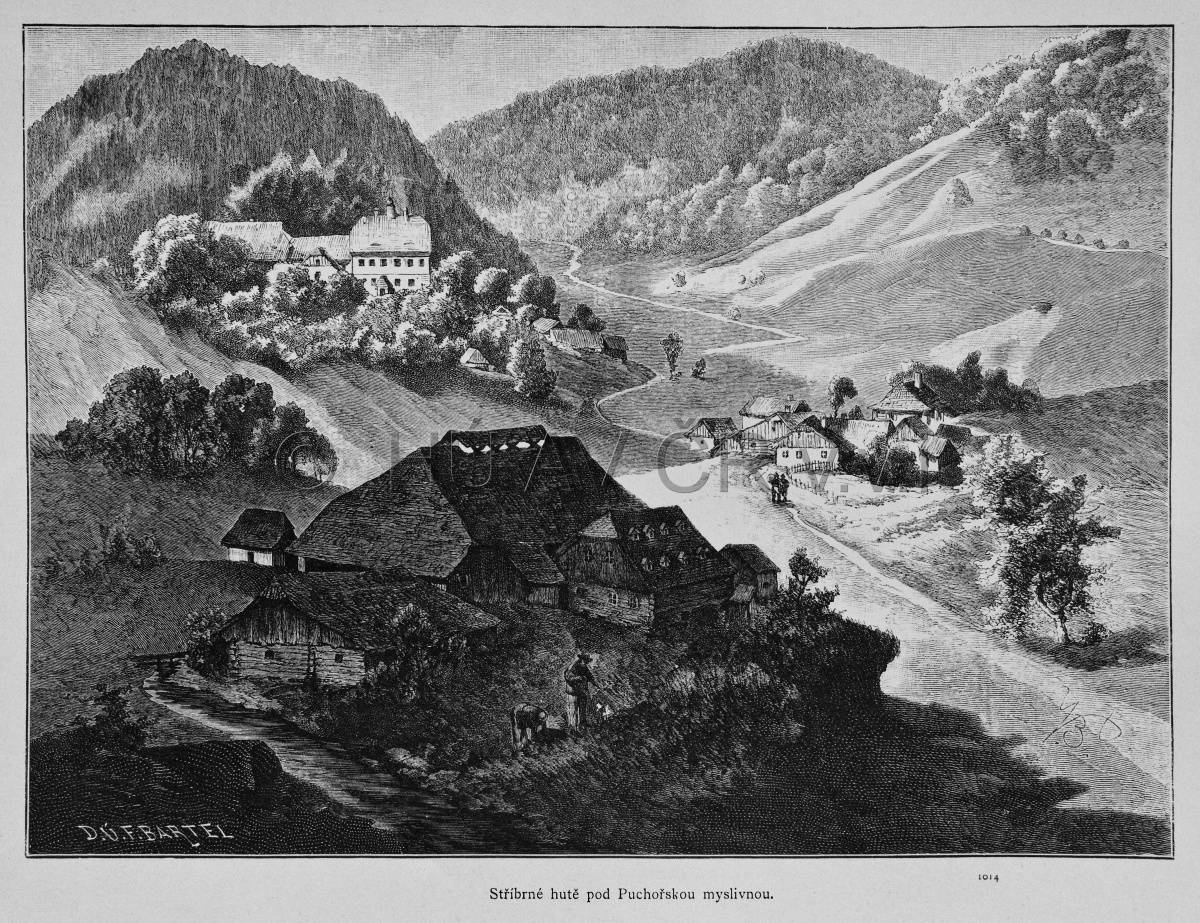
Stříbrné hutě glassworks in the Gratzen Mountains, in: Ottovy Čechy VI. (1890). Library of the Institute of History, CAS.

Glassworks in Jiříkovo Údolí near Nové Hrady, in: Ottovy Čechy VI. (1890). Library of the Institute of History, CAS.
References
Klíma, A.: Manufakturní období v Čechách. Praha 1955;
Drahotová, O. a kol.: Historie sklářské výroby v českých zemích, I. díl. Praha 2005;
Semotanová, E. ‒ Cajthaml, J. a kol.: Akademický atlas českých dějin. Praha 2014, 2. akt. vydání 2016.

This work is licensed under a Creative Commons BY-NC-ND 4.0
Important manufactories in the Czech Lands in the second half of the 18th century
Throughout the 18th century, the number of manufactories in the Czech Lands increased with textile production as the main sector: wool (cloth) industry, flax industry (linen weaving), the cotton industry, and cotton cloth printing linked to the cottage industry in the northern border areas. In the 18th century, the first machines were built for the cotton industry and Brno became the most important textile centre. The number of glassworks rose to seventy. Bohemian glass met requirements for luxury dining and was thus successfully exported to European countries and overseas.
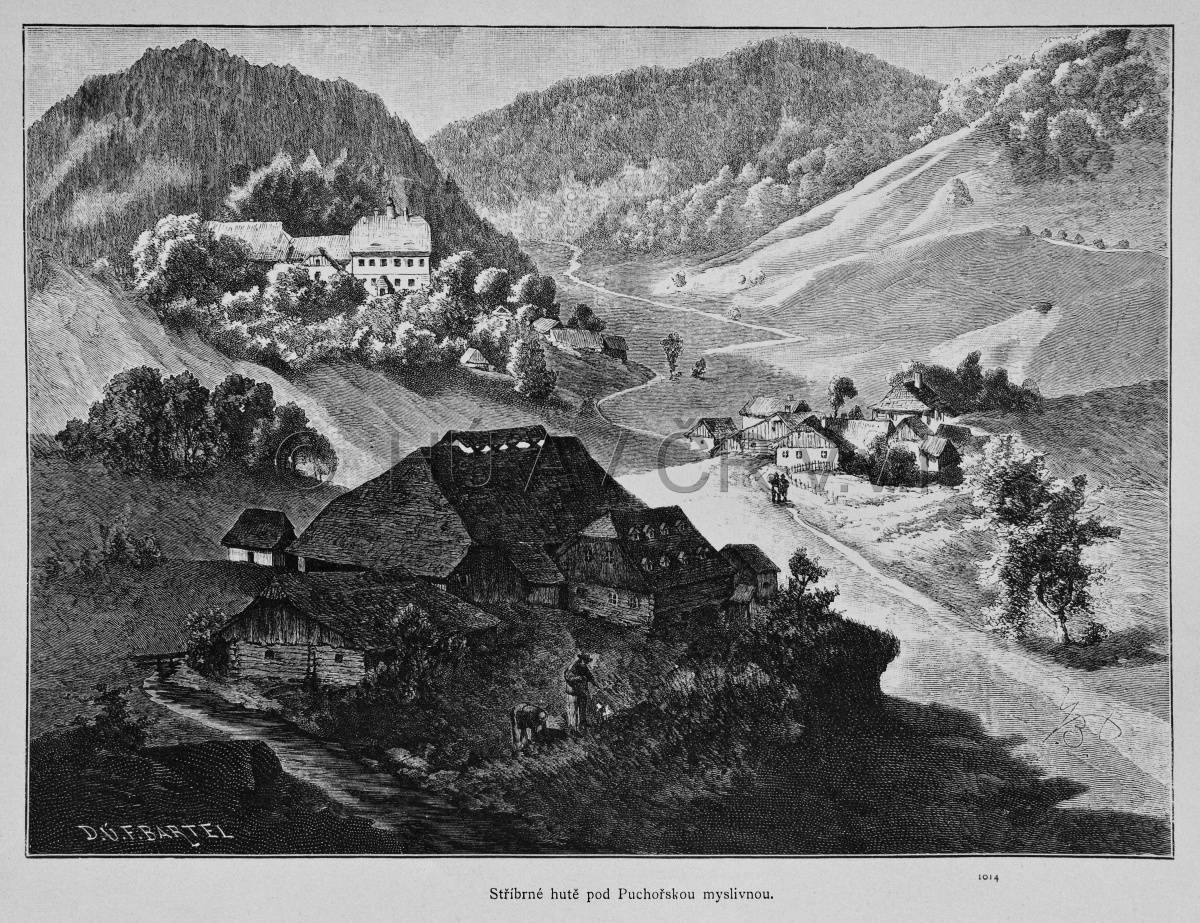
Stříbrné hutě glassworks in the Gratzen Mountains, in: Ottovy Čechy VI. (1890). Library of the Institute of History, CAS.

Glassworks in Jiříkovo Údolí near Nové Hrady, in: Ottovy Čechy VI. (1890). Library of the Institute of History, CAS.
References
Klíma, A.: Manufakturní období v Čechách. Praha 1955;
Drahotová, O. a kol.: Historie sklářské výroby v českých zemích, I. díl. Praha 2005;
Semotanová, E. ‒ Cajthaml, J. a kol.: Akademický atlas českých dějin. Praha 2014, 2. akt. vydání 2016.

This work is licensed under a Creative Commons BY-NC-ND 4.0
Industry in the Czech Lands in the first half of the 19th century
The map illustrates the transition from advanced manufactory production to industrial production based on several major sectors initially oriented to export (glassworks, textile production – linen weaving and cloth production, metallurgy). In the 1920s, these industries were gradually joined by other sectors such as food processing, which frequently responded to the earlier blockade of goods during the Napoleonic Wars (sugar industry) or cotton industry and a little later, also mechanical engineering connected with railway construction and other infrastructures. As regards geographic distribution, the gradual expansion of the steam engine moved the industry from mountain and foothill areas to the developing urban agglomerations (Prague, Brno, Plzeň). In the beginning, the development was slowed down by lack of capital and therefore, savings banks and other financial institutions were established.
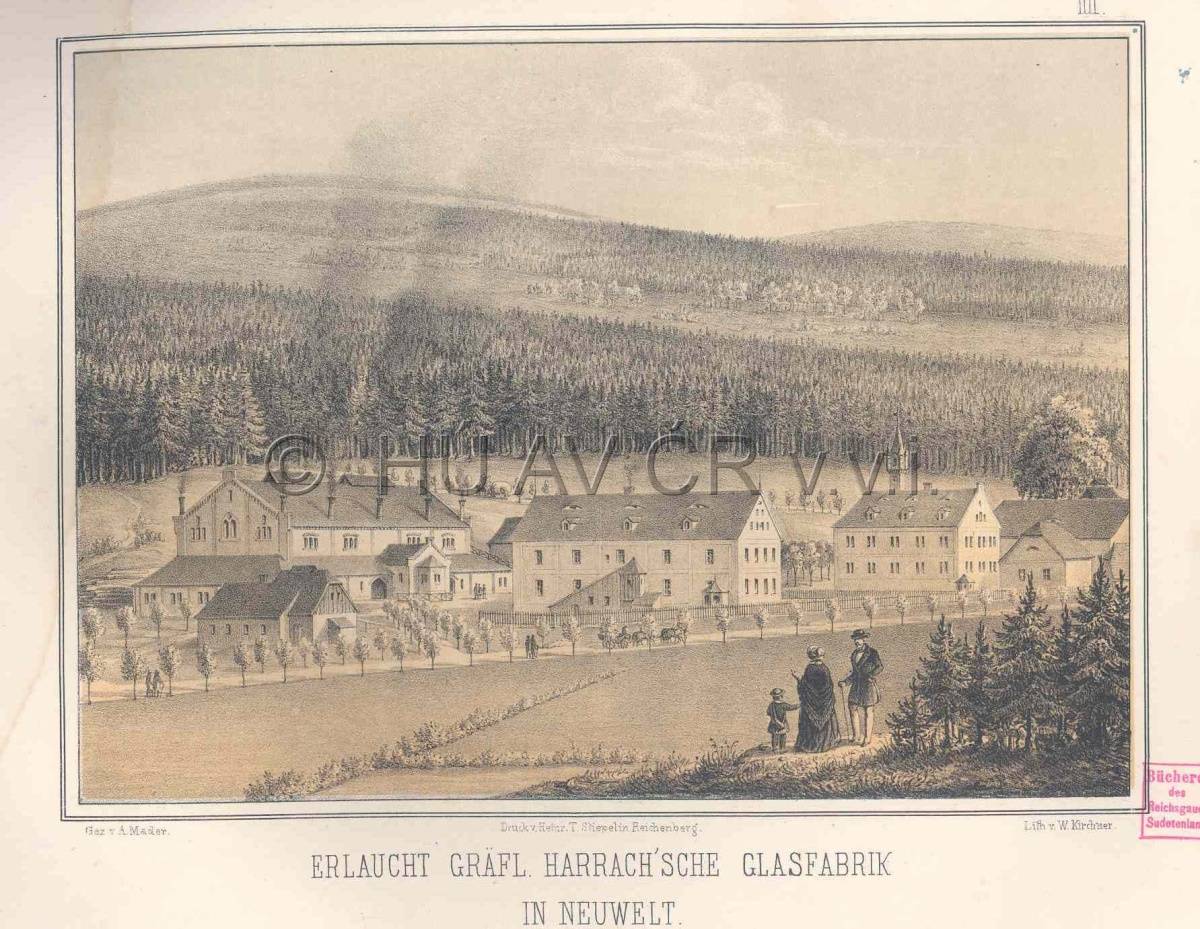
Harrach's glassworks in Nový Svět, mid-19th century. Anton ANSCHIRINGER, Album der Industrie des Reichenberger Handelskammer- Bezirks, Reichenberg 1858, reprint Prague 1981. Library of the Institute of History, CAS.
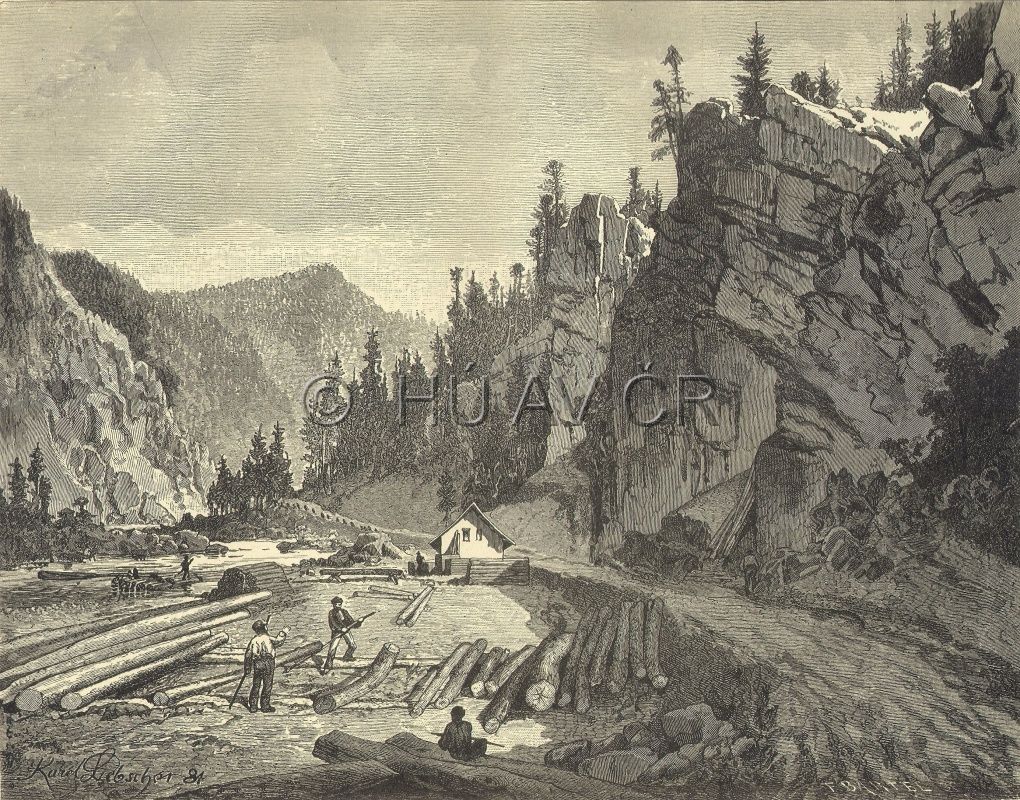
Woodcutters in the Otava Valley in an illustration of Karel Liebscher around 1887. Im Wottawathale, in: Friedrich BERNAU, Der Böhmerwald, Prag 1887, s. 97. Collection of the Historical Geography Library, Institute of History, CAS
References
Purš, J.: Průmyslová revoluce v českých zemích. Praha 1960;
Klíma, A.: Economy, Industry and Society in Bohemia in the 17.–19. Centuries. Praha 1991;
Půlpán, K.: Nástin českých a československých hospodářských dějin do r. 1990. 1. díl. Praha 1993;
Štaif, J.: Obezřetná elita. Česká společnost mezi tradicí a revolucí 1830–1851. Praha 2005;
Jakubec, I. – Jindra, Z. (eds.): Dějiny hospodářství českých zemí od počátku industrializace do konce habsburské monarchie. Praha 2006

This work is licensed under a Creative Commons BY-NC-ND 4.0
Image of the industry in the 1930s
After the establishment of Czechoslovakia, economic and industrial development followed up the pre-1918 situation focused on export. The main industrial sectors consisted of heavy machinery and specialized branches such as glass, costume jewellery, shoes, textile, weapons, or beer production. New industries such as chemistry, electrical engineering, or aircraft industry developed, and electrification and automobilization were almost completed. New production processes were introduced by many entrepreneurs, the most progressive being Tomáš Baťa in Zlín. In 1930–1933, the Great Depression, which lasted until 1938 in some of the light industry sectors, heavily damaged the economy. The subsequent war boom mostly involved heavy industry at the cost of plundering the resources and labourers.
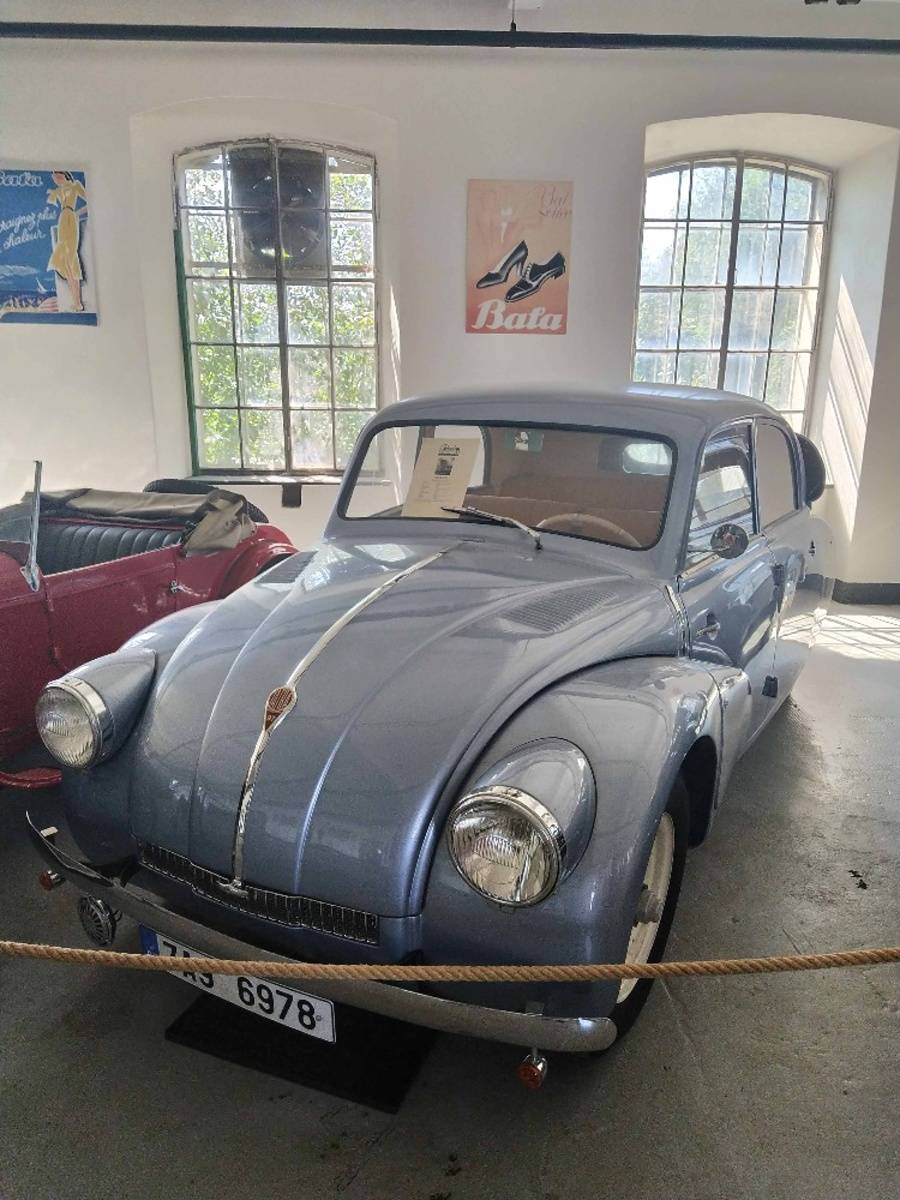
Tatra 97, one of the first mass-produced aerodynamic cars in the world at the Tatra car plant in Kopřivnice. Photo Tomáš Burda, 2020
References
Purš, J. a kol.: Atlas československých dějin. Praha 1965;
Průcha, V. a kol.: Hospodářské a sociální dějiny Československa 1918–1992, 1. díl, období 1918–1945. Brno 2004;
Semotanová, E. a kol.: Česko. Ottův historický atlas. Praha 2007;
Průcha, V. a kol.: Hospodářské a sociální dějiny Československa 1918–1992, 2. díl, období 1945–1992. Brno 2009;
Semotanová, E. – Cajthaml, J. a kol.: Akademický atlas českých dějin. Academia, Praha 2014, 2. akt. vydání 2016.

This work is licensed under a Creative Commons BY-NC-ND 4.0
Image of the industry in the 1960s
After 1945 and in particular 1948, the entire industry was nationalised and unidirectional orientation on heavy industry and material-intensive sectors was established. However, the planned economy was unable to catch up with new trends of the world economic development even in sectors where Czechoslovakia had belonged to the leaders – electrical engineering, car production, electronics, and other sectors. The material and raw material dependency on the Soviet Union and incorporation in the Council for Mutual Economic Assistance was a great weakness. It entailed not only orientation on the eastern markets, but also handing some productions to other socialist countries. Slovakia, but also certain peripheral parts of the Czech lands became heavily industrialised, but mostly with unsuitable branches of industry. Reformatory efforts of economists headed by Ota Šik were short-lived, violently terminated by occupation in August 1968.
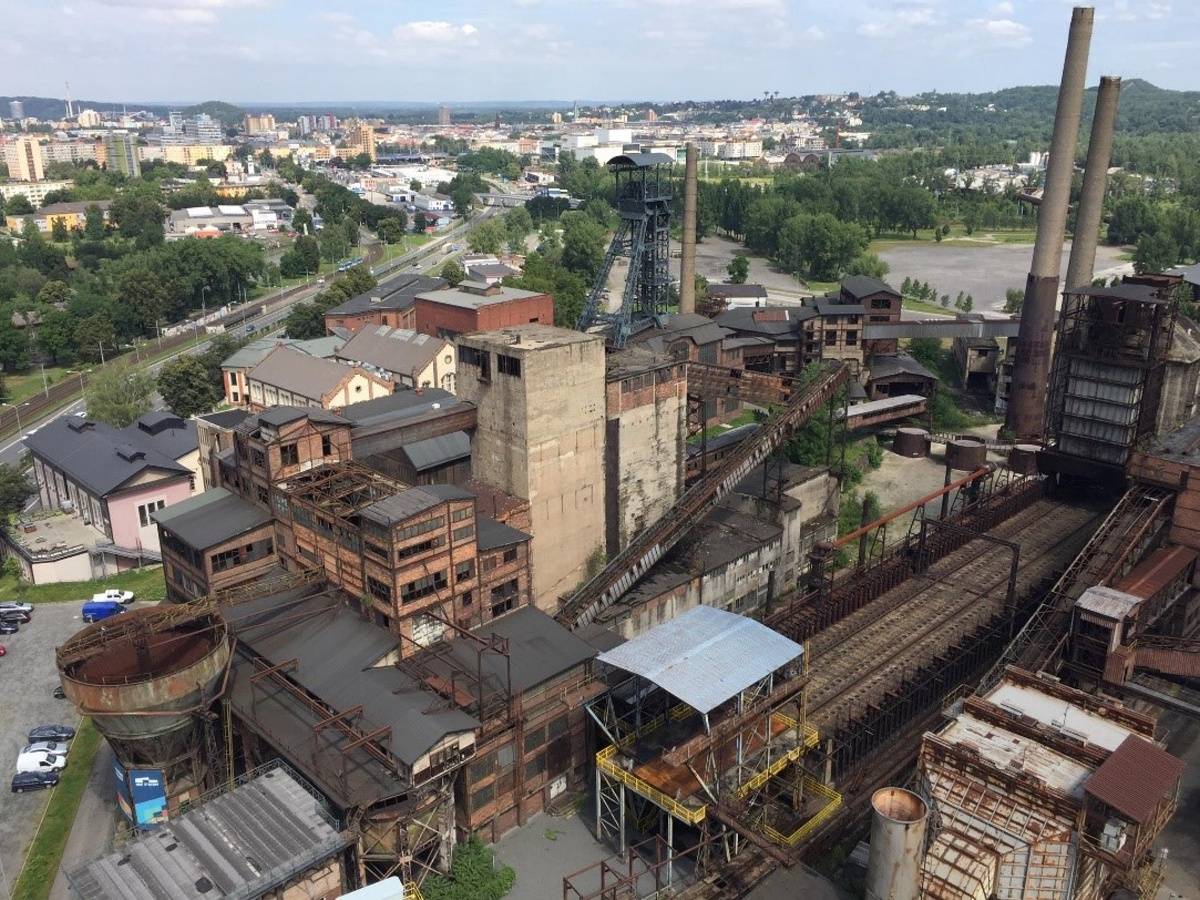
The industrialized area of Dolní Vítkovice in Ostrava. Photo Eliška Lanzová, 2020
References
Purš, J. a kol.: Atlas československých dějin. Praha 1965;
Průcha, V. a kol.: Hospodářské a sociální dějiny Československa 1918–1992, 1. díl, období 1918–1945. Brno 2004;
Semotanová, E. a kol.: Česko. Ottův historický atlas. Praha 2007;
Průcha, V. a kol.: Hospodářské a sociální dějiny Československa 1918–1992, 2. díl, období 1945–1992. Brno 2009;
Semotanová, E. – Cajthaml, J. a kol.: Akademický atlas českých dějin. Academia, Praha 2014, 2. akt. vydání 2016.

This work is licensed under a Creative Commons BY-NC-ND 4.0
